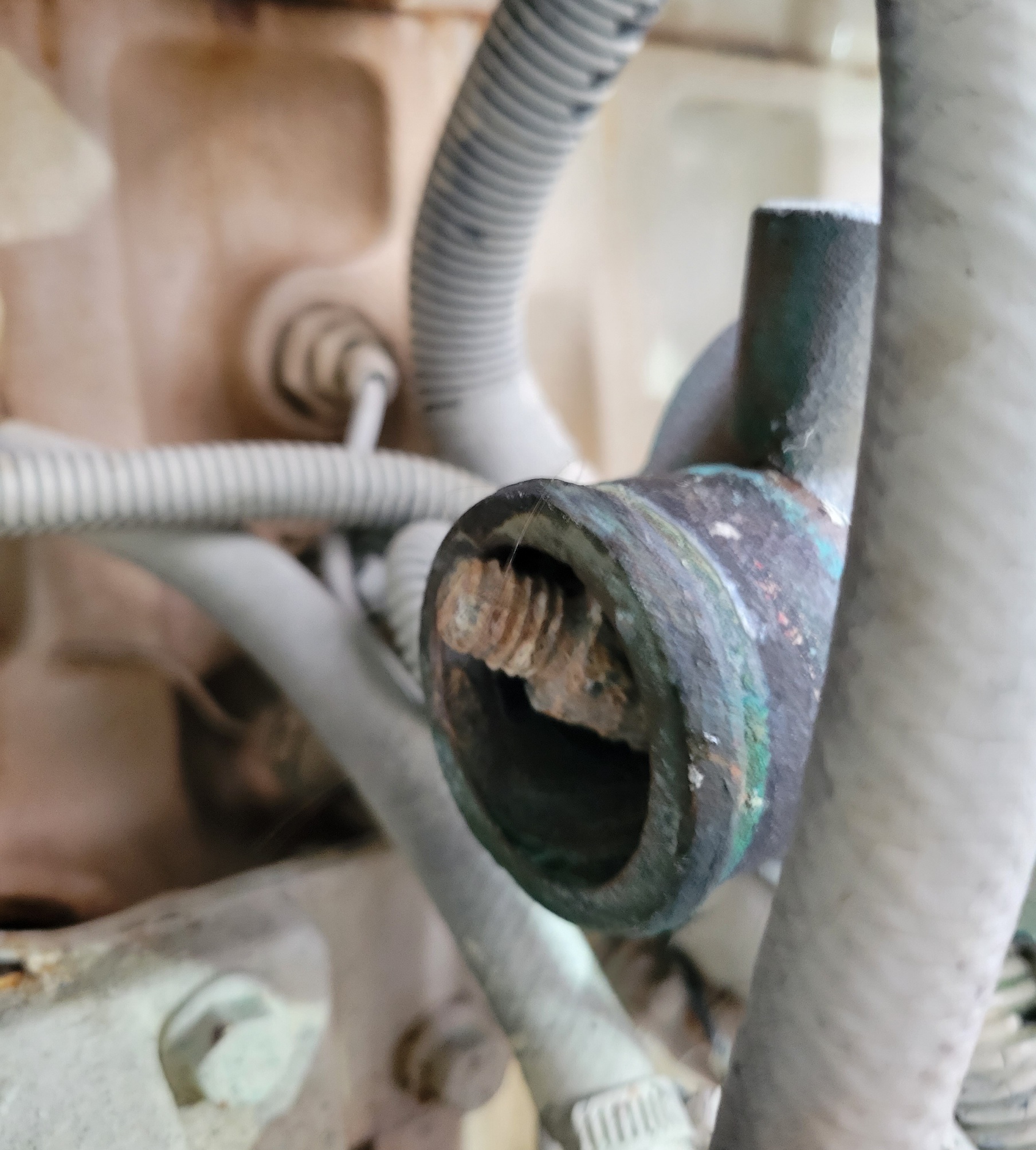- May 1, 2021
- 782
- Boat Info
- 1999 450 Express Bridge
Garmin 5212s, Garmin HD Radar
Raypilot 650
- Engines
- Cummins 6CTA.8.3M 430 HP
ZF 280-IV Transmissions
I am sure I am not the first, but had started noticing some steam in my port engine (no change engine temp at all). Well, thought I had dirty coolers, but they look great (doing the maintenance anyway). Pretty sure I found the culprit, look what I found on the inlet side if the gear cooler...the whole top zinc out of the aftercooler.  Not sure how long it was there, but I have a brand new gear cooler as my IR gun showed my port trans running 20 degrees hotter than my starboard. Will probably pull this one, clean it, pressure check and keep as a spare. Lesson, if you think your zinc completely dissolved, maybe it didn't.
Not sure how long it was there, but I have a brand new gear cooler as my IR gun showed my port trans running 20 degrees hotter than my starboard. Will probably pull this one, clean it, pressure check and keep as a spare. Lesson, if you think your zinc completely dissolved, maybe it didn't.




